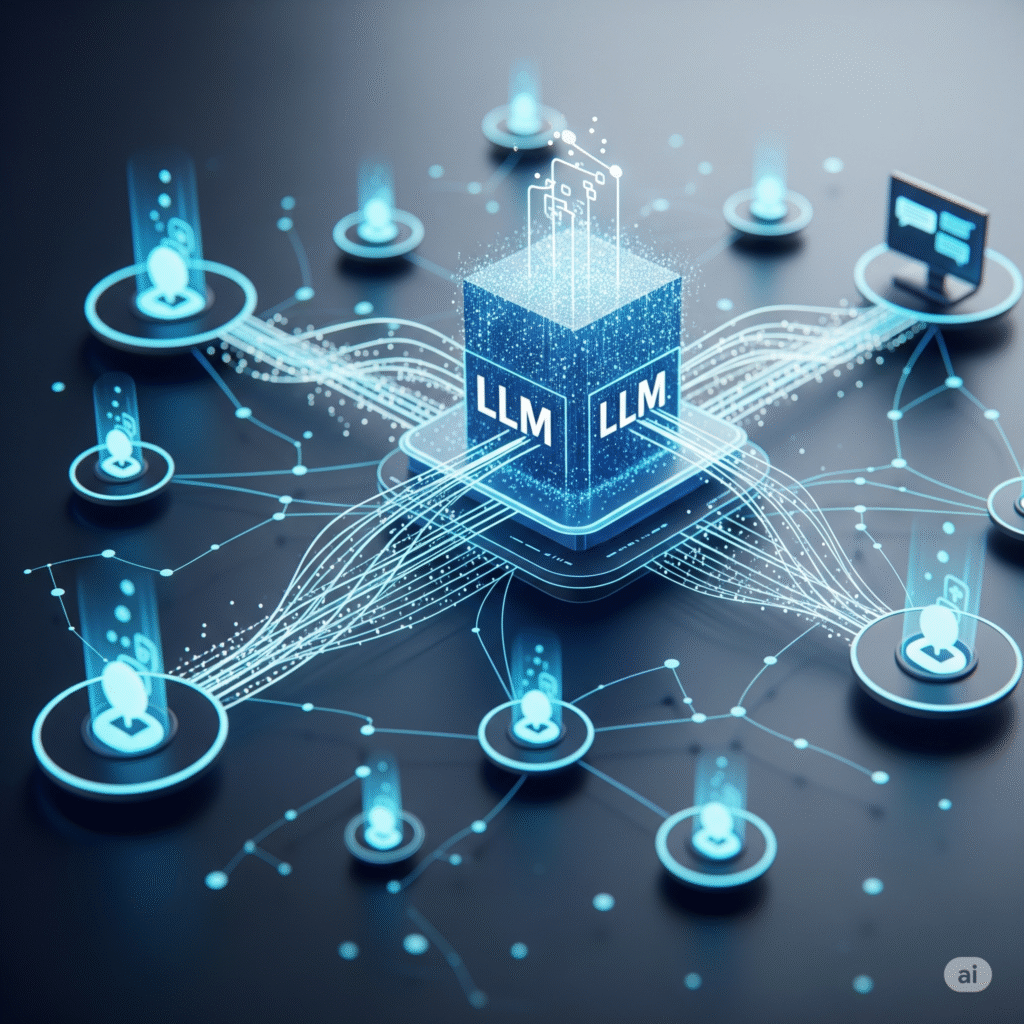In recent years, the term “LLM” or “Large Language Model” has become a buzzword in the world of artificial intelligence. Whether you’re a tech enthusiast, a developer, a business strategist, or a curious learner, understanding what LLMs are and how they differ from traditional machine learning (ML) models is crucial in 2025. This comprehensive guide will help you understand the foundational concepts, architectures, use cases, and key differentiators between LLMs and traditional ML models.

Table of Contents
What is a Large Language Model (LLM)?
A Large Language Model is a type of deep learning model that is trained on massive amounts of text data to understand, generate, and manipulate human language. These models use neural networks especially the transformer architecture to learn patterns, semantics, context and syntax from text.
The most well-known examples of LLMs include:
- GPT-4 / GPT-4o by OpenAI
- Claude by Anthropic
- Gemini by Google DeepMind
- Mistral & LLaMA by Meta
How LLMs Work?
LLMs are trained on datasets containing billions of words, ranging from books and articles to code and conversations. Their training objective is to predict the next word (or token) in a sentence, which teaches them grammar, context, and even reasoning.
Key Characteristics:
- Scale: Trained on hundreds of billions of parameters.
- Self-supervised learning: They learn from raw, unlabeled text.
- Context awareness: They can understand long-form context due to transformer-based attention mechanisms.
Under the Hood: Transformer Architecture
Traditional machine learning models often rely on feature engineering. LLMs, on the other hand, utilize the transformer architecture, introduced by Vaswani et al. in 2017.
Key components:
- Attention Mechanism: Helps the model focus on relevant words in a sentence.
- Positional Encoding: Gives a sense of order to the input text.
- Multi-head Attention: Enhances the ability to capture different contextual relationships simultaneously.
This design allows LLMs to process and generate language more fluidly and flexibly than older models.
Traditional Machine Learning Models: A Quick Recap
Traditional ML models include:
- Linear Regression
- Logistic Regression
- Decision Trees & Random Forests
- Support Vector Machines (SVMs)
- K-Nearest Neighbors (KNN)
These models require structured data (tables, numerical features) and typically rely on manual feature extraction. They work well in scenarios with clearly defined input-output mappings.
Key Differences: LLMs vs Traditional ML Models
| Aspect | LLMs | Traditional ML Models |
|---|---|---|
| Data Type | Unstructured (text, code) | Structured (numerical/categorical) |
| Feature Engineering | Not required | Often required |
| Model Architecture | Transformers | Linear, tree-based, SVM, etc. |
| Training Objective | Predict next token (unsupervised) | Classification/regression (supervised) |
| Scalability | Scales to billions of parameters | Typically smaller scale |
| Use Cases | Text generation, summarization, translation | Fraud detection, forecasting, diagnostics |
Real-World Applications of LLMs
- Customer Support Chatbots
- Code Autocompletion (e.g., GitHub Copilot)
- AI Writers & Editors (e.g., Jasper, Grammarly)
- Search and Retrieval Systems
- Legal Document Analysis
- Medical Report Summarization
- Marketing Copy Generation
- Education & Tutoring Systems
LLM Tools & Ecosystem in 2025
- OpenAI API & ChatGPT
- Anthropic’s Claude API
- Google Gemini Cloud Tools
- LangChain & LlamaIndex for app integration
- Vector Databases (Pinecone, Chroma, Weaviate)
Benefits of Using LLMs
- Reduces need for manual rules or templates
- Adapts to various domains with minimal tuning
- Highly scalable with cloud infrastructure
- Enables rapid prototyping and AI integration
Challenges & Limitations of LLMs
- Hallucination: Generating false or misleading information
- Bias: Learning and reproducing biased or harmful language
- Cost: High computational and operational costs
- Interpretability: Difficult to fully understand model decisions
How LLMs Are Changing the ML Landscape
Traditional ML isn’t going away. Instead, it’s complementing LLMs in many pipelines:
- Preprocessing via classical ML + Generation via LLMs
- ML models for structured prediction; LLMs for natural language interpretation
- End-to-end hybrid AI systems
Future of LLMs
- Multi-modal LLMs: Integrating vision, audio, and language (like GPT-4o)
- Open-source dominance: Mistral, LLaMA, and others reducing dependency on big tech
- Agentic AI: LLMs that can plan, act, and adapt
- Edge LLMs: Smaller, faster models running on mobile and IoT devices
Conclusion
Large Language Models are revolutionizing how machines understand and interact with human language. Unlike traditional ML models that depend on structured data and heavy feature engineering, LLMs leverage deep neural networks to learn language patterns directly from raw data.
The rise of LLMs doesn’t mean the end of traditional ML, but rather an evolution toward more complex, flexible, and intelligent AI systems. By understanding both paradigms, you’re better equipped to build smart, human-centered AI solutions for the future.
Related Read
What is XGBoost in Machine Learning?

1 thought on “What Are LLMs? A Deep Dive into Large Language Models and 6 Impressive Differences from Traditional Machine Learning Models”